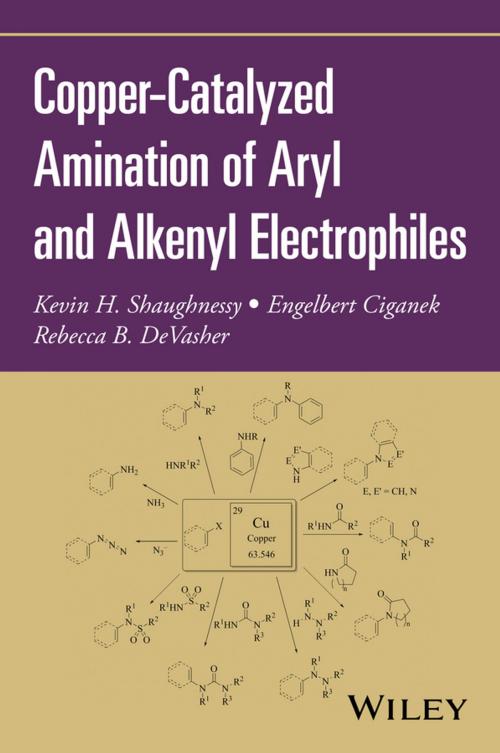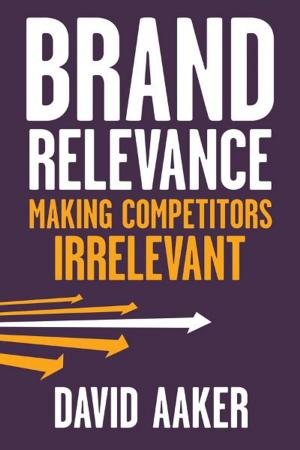Copper-Catalyzed Amination of Aryl and Alkenyl Electrophiles
Nonfiction, Science & Nature, Science, Chemistry, Physical & Theoretical| Author: | Kevin H. Shaughnessy, Engelbert Ciganek, Rebecca B. DeVasher | ISBN: | 9781119347385 |
| Publisher: | Wiley | Publication: | January 3, 2017 |
| Imprint: | Wiley | Language: | English |
| Author: | Kevin H. Shaughnessy, Engelbert Ciganek, Rebecca B. DeVasher |
| ISBN: | 9781119347385 |
| Publisher: | Wiley |
| Publication: | January 3, 2017 |
| Imprint: | Wiley |
| Language: | English |
The metal-catalyzed amination of aryl and alkenyl electrophiles has developed into a widely used methodology for the synthesis of natural products, active pharmaceutical ingredients, agricultural chemicals, and materials for molecular electronics. Copper catalysts promote the coupling of a wide range of nitrogen nucleophiles, including amines, amides, and heteroaromatic nitrogen compounds with aryl and alkenyl halides. The reactivity profile of copper catalysts is complementary to that of palladium catalysts in many cases. Copper catalysts are highly effective with less nucleophilic nitrogen nucleophiles, such as amides and azoles, whereas palladium catalysts are more effective with more nucleophilic amine nucleophiles. Copper is an attractive alternative to palladium due to its significantly lower cost. In addition, high activity palladium catalysts require expensive and often air-sensitive ligands, whereas the modern copper systems use relatively stable and inexpensive diamine or amino acid ligands. Copper-catalyzed C–N coupling reactions are tolerant of a wide range of functional groups and have been applied to the synthesis of a variety of complex natural products. Significant work has also been done to understand the mechanism of these reactions. Current mechanistic understanding of these methodologies is covered in this monograph.
The contents of the book are taken from the comprehensive review of the topic in the Organic Reactions series. Optimal experimental conditions for the amination of aryl and alkenyl halides with all classes of nitrogen nucleophiles are presented. Specific experimental procedures from the literature are provided for the major classes of copper-catalyzed C–N coupling reactions. A tabular survey of all examples of Cu-catalyzed arylation and alkenylation of nitrogen nucleophiles is presented in 35 tables organized by nitrogen nucleophile and electrophilic coupling partner.
The literature is covered through December 2015 and provides 300 recent citations to supplement the 680 citations of the original hardbound chapter. These latest literature references have been collected in separate sections according to the sequence of the tables in the tabular survey section. In each of the sections, the individual citations have been arranged in alphabetic order of the author names.
Copper-Catalyzed Amination of Aryl and Alkenyl Electrophiles is intended to provide organic chemists with an accessible, but detailed, introduction to this important class of transformations.
The metal-catalyzed amination of aryl and alkenyl electrophiles has developed into a widely used methodology for the synthesis of natural products, active pharmaceutical ingredients, agricultural chemicals, and materials for molecular electronics. Copper catalysts promote the coupling of a wide range of nitrogen nucleophiles, including amines, amides, and heteroaromatic nitrogen compounds with aryl and alkenyl halides. The reactivity profile of copper catalysts is complementary to that of palladium catalysts in many cases. Copper catalysts are highly effective with less nucleophilic nitrogen nucleophiles, such as amides and azoles, whereas palladium catalysts are more effective with more nucleophilic amine nucleophiles. Copper is an attractive alternative to palladium due to its significantly lower cost. In addition, high activity palladium catalysts require expensive and often air-sensitive ligands, whereas the modern copper systems use relatively stable and inexpensive diamine or amino acid ligands. Copper-catalyzed C–N coupling reactions are tolerant of a wide range of functional groups and have been applied to the synthesis of a variety of complex natural products. Significant work has also been done to understand the mechanism of these reactions. Current mechanistic understanding of these methodologies is covered in this monograph.
The contents of the book are taken from the comprehensive review of the topic in the Organic Reactions series. Optimal experimental conditions for the amination of aryl and alkenyl halides with all classes of nitrogen nucleophiles are presented. Specific experimental procedures from the literature are provided for the major classes of copper-catalyzed C–N coupling reactions. A tabular survey of all examples of Cu-catalyzed arylation and alkenylation of nitrogen nucleophiles is presented in 35 tables organized by nitrogen nucleophile and electrophilic coupling partner.
The literature is covered through December 2015 and provides 300 recent citations to supplement the 680 citations of the original hardbound chapter. These latest literature references have been collected in separate sections according to the sequence of the tables in the tabular survey section. In each of the sections, the individual citations have been arranged in alphabetic order of the author names.
Copper-Catalyzed Amination of Aryl and Alkenyl Electrophiles is intended to provide organic chemists with an accessible, but detailed, introduction to this important class of transformations.















